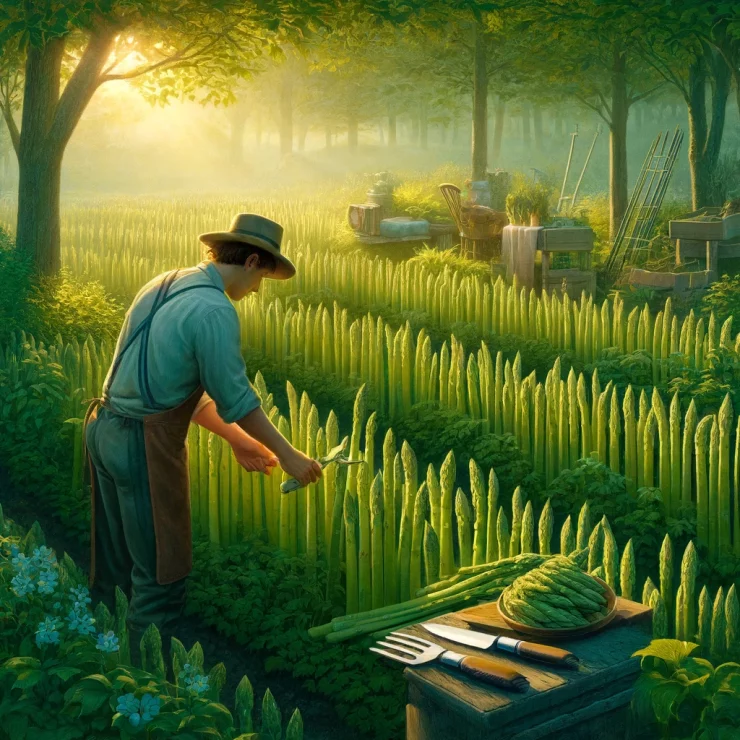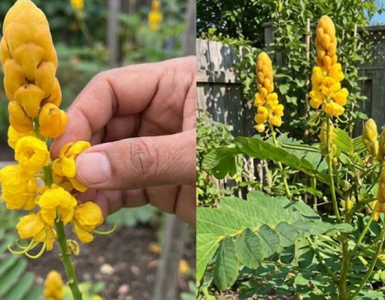Asparagus, with its tender spears and distinctive flavor, is a favorite among vegetable enthusiasts. While it’s readily available in stores during its peak season, there’s something uniquely rewarding about cultivating your own supply at home. Not only does homegrown asparagus taste incredibly fresh, but the process of planting, growing, and harvesting it can be a fulfilling journey for any gardener. Here’s a comprehensive guide on how to plant, grow, and harvest asparagus in your own backyard.
1.Planting Asparagus
Choose the Right Location: Asparagus thrives in well-drained soil with plenty of sunlight. Select a spot in your garden that receives full sun and has good drainage to prevent waterlogging.
Prepare the Soil: Before planting, amend the soil with compost or well-rotted manure to improve fertility and drainage. Asparagus prefers slightly acidic to neutral soil with a pH of around 6.5 to 7.5.
Planting Depth: Asparagus crowns (the root system) should be planted in trenches that are about 12-18 inches deep. Space the crowns about 12-18 inches apart within the trench to allow room for growth.
Careful Placement: Place the crowns in the trench with the buds facing upward, and cover them with 2-3 inches of soil. As the plants grow, gradually fill in the trench with soil until it’s level with the ground.
2.Growing Asparagus
Watering: Asparagus plants require regular watering, especially during dry spells. Keep the soil consistently moist but not waterlogged to promote healthy growth.
Fertilization: Fertilize the asparagus bed in early spring before shoots emerge using a balanced fertilizer or compost. Avoid using high-nitrogen fertilizers, as they can promote excessive foliage growth at the expense of spear production.
Weed Control: Keep the asparagus bed free of weeds, as they can compete with young asparagus plants for nutrients and water. Mulching around the plants can help suppress weed growth and retain soil moisture.
Patience is Key: It’s important to note that asparagus is a perennial vegetable that takes time to establish. You may need to wait 2-3 years before harvesting a substantial crop. However, the patience will be rewarded with bountiful harvests for years to come.
3.Harvesting Asparagus
First Harvest: Resist the temptation to harvest spears from newly planted asparagus crowns. Allow the plants to establish themselves and develop strong root systems during the first couple of years.
When to Harvest: Begin harvesting asparagus spears when they reach 6-8 inches in height and are about the diameter of your finger. Use a sharp knife to cut the spears just below the soil surface, being careful not to damage emerging spears nearby.
Harvesting Period: Depending on the climate and growing conditions, the harvesting period typically lasts for 6-8 weeks in spring. Stop harvesting when the spear diameter becomes smaller, indicating that the plants need to replenish their energy reserves for the next season.
Allow Fern Growth: After the harvesting period ends, allow the remaining spears to grow into fern-like foliage. These ferns will photosynthesize and provide energy for the plants to store in their roots for the following year’s harvest.
By following these guidelines for planting, growing, and harvesting asparagus at home, you can enjoy a bountiful supply of fresh spears straight from your garden. With a little patience and care, you’ll soon be savoring the delicious flavor of homegrown asparagus with each harvest.






Add comment